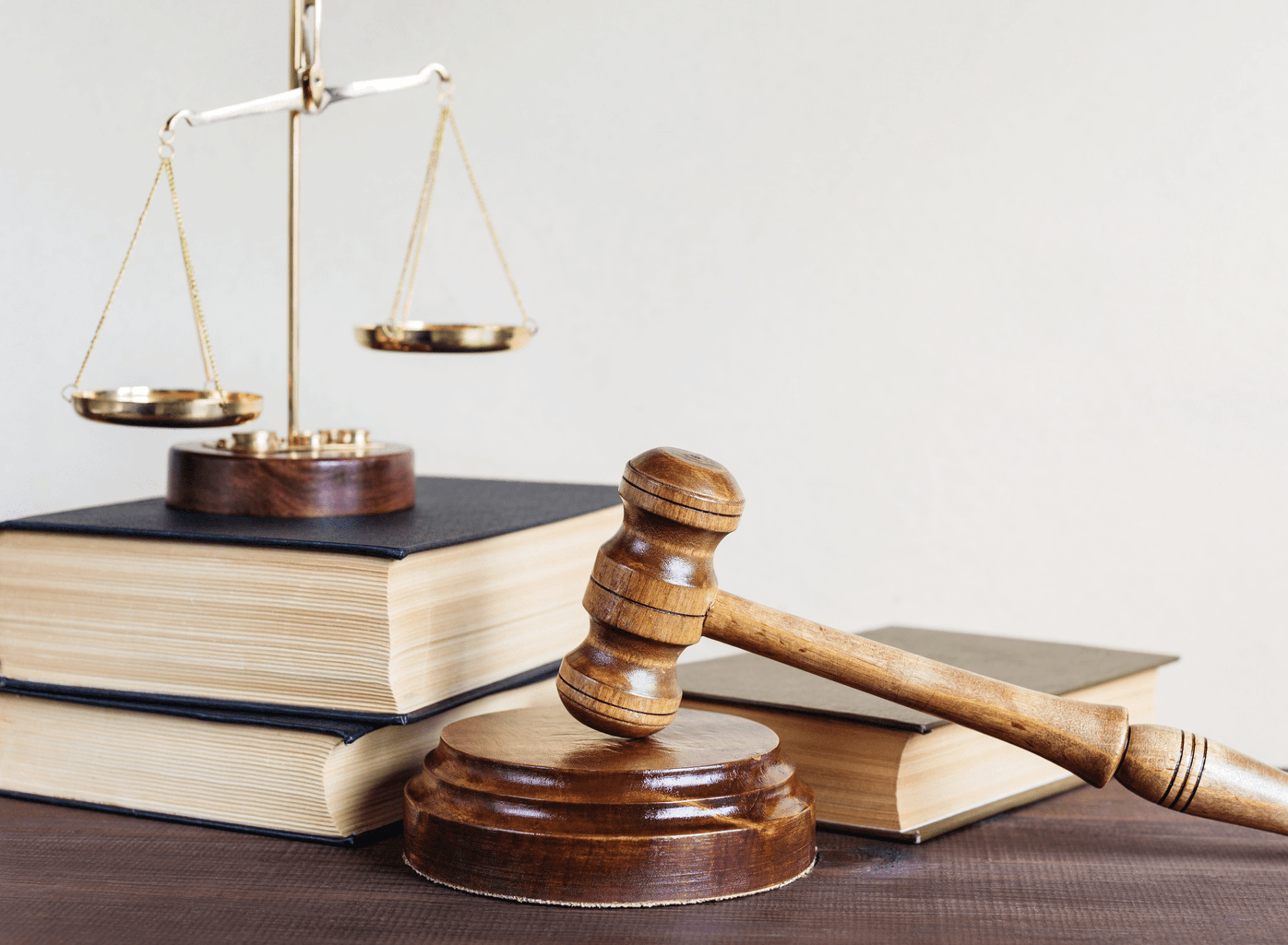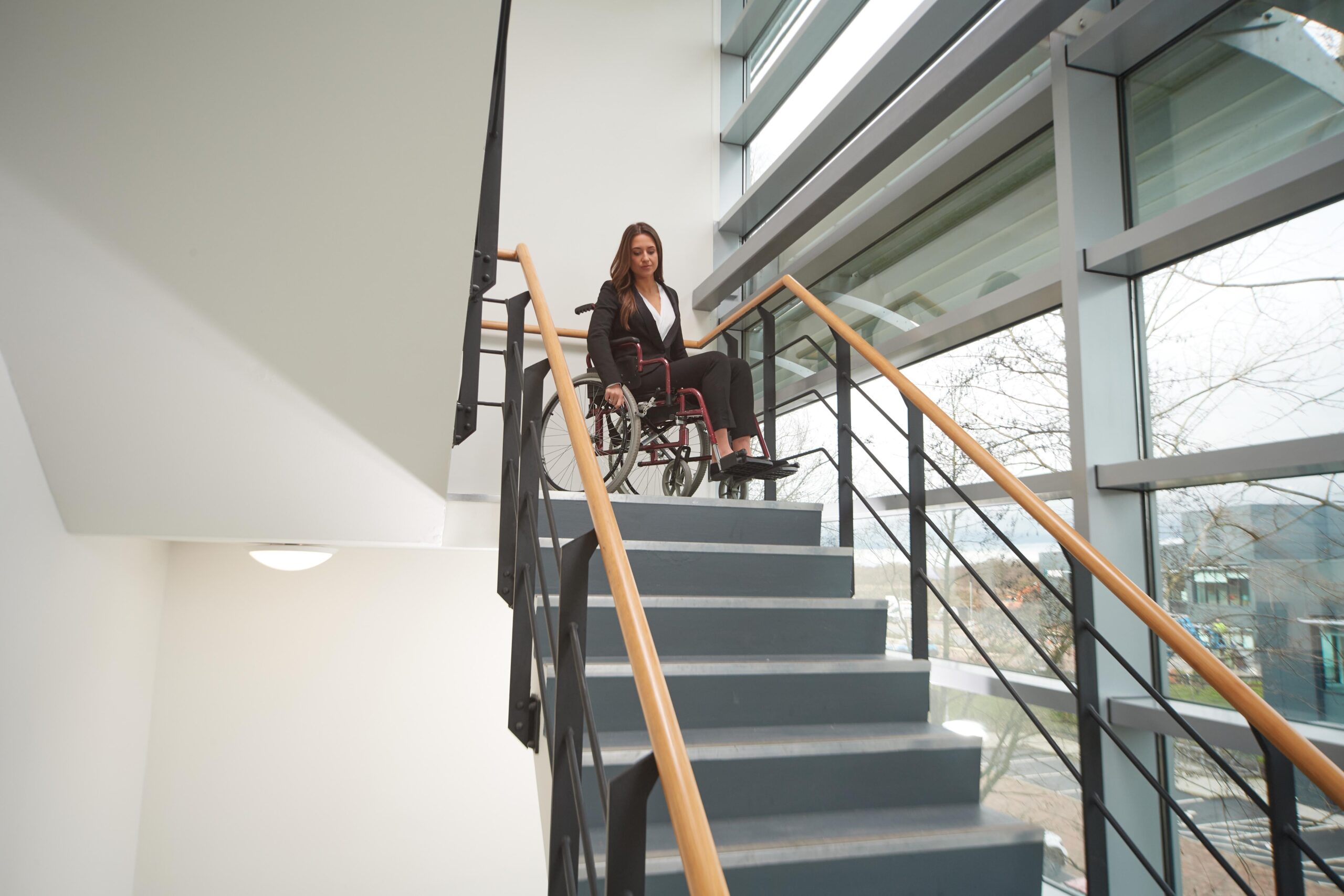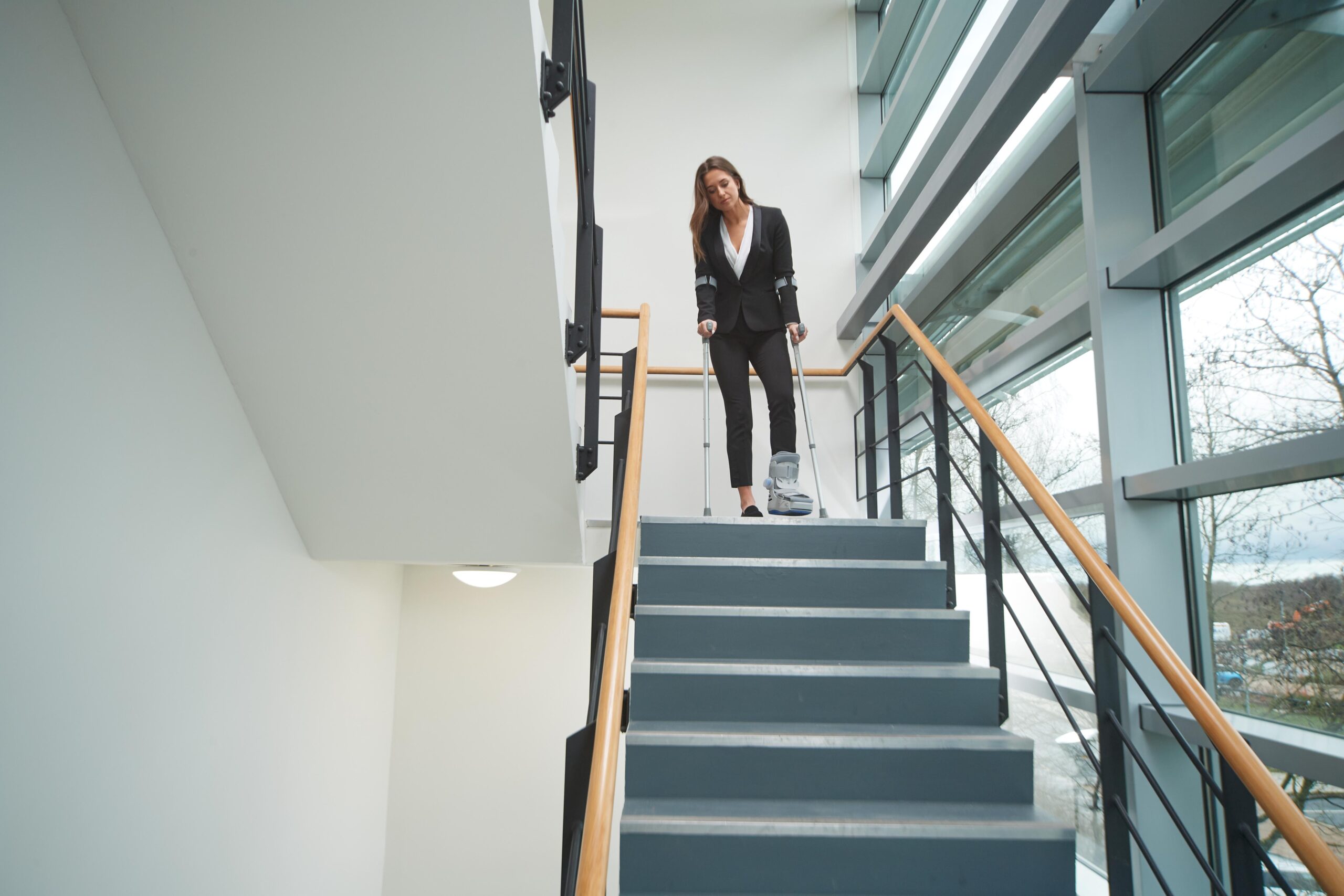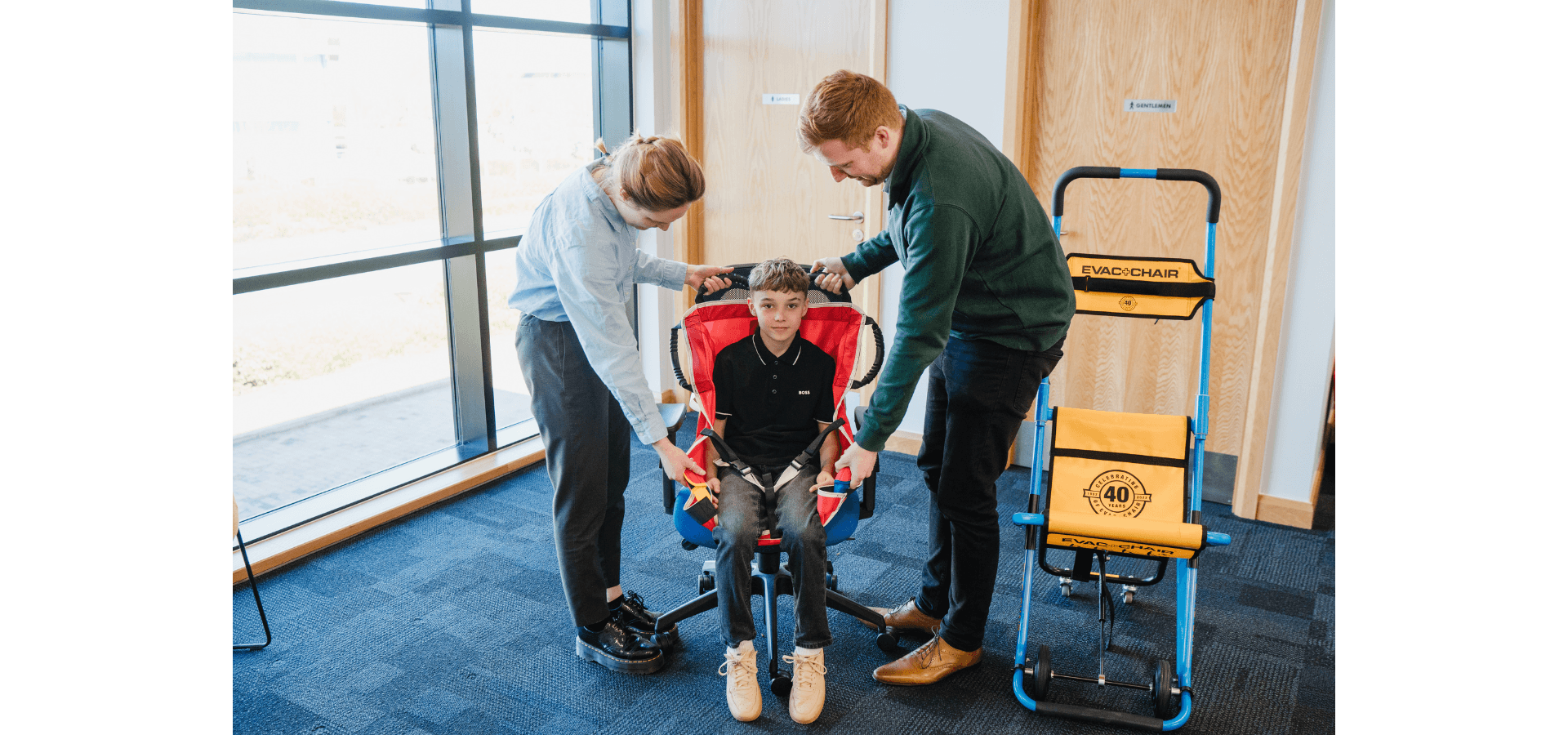Legislation & Compliance
Understanding and adhering to relevant legislation is critical for ensuring safety and compliance in emergency evacuations. Evac+Chair products are designed to help organisations meet their legal obligations, providing a reliable solution for the evacuation of individuals with mobility impairments.
PEEPs & GEEPs
Compliance with fire safety regulations in commercial settings relies on the following being devised by a nominated responsible person.
PEEPs (Personal Emergency Evacuation Plans):
Designed to assist employees or regular users of a building, who have a permanent or temporary impairment and are therefore unable to self-evacuate, or may require assistance in the event of an emergency. A PEEP is tailored to a specific individual and needs to include their requirements, the agreed escape route, evacuation method and who will be assisting. It is essential that regular fire drills and tests are carried to ensure the PEEP is effective, relevant and suitable to the individual’s needs.
GEEPs (Generic Emergency Evacuation Plans):
Designed to assist visitors, the general public or a transient workforce who are unable to self-evacuate or may require assistance. A GEEP provides guidance on building layout, evacuation procedures, available equipment and communication devices used during an emergency. A GEEP should be regularly tested to ensure staff are aware of the procedures and are prepared.


Inclusive Evacuation Is a Legal Responsibility
Current legislation places a clear duty on building owners, employers and those responsible for premises to ensure the safe evacuation of everyone, including individuals with mobility impairments.
Providing the right equipment, such as an Evac+Chair, isn’t just best practice, it’s a legal and ethical obligation that demonstrates your commitment to safety, accessibility and compliance.
Health & Safety at Work Act 1974
Requires every employer ‘to protect all workers from the risk of injury or harm at work, so far as is reasonably practicable’.
Equality Act 2010
Legally protects people from discrimination in the workplace and wider society, providing examples of how its is unlawful to treat someone. It has replaced:
- Sex Discrimination Act 1975
- Race Relations Act 1976
- Disability Discrimination Act 1995
British Standards – Codes of Practice
- BS9999 – Fire safety in building design, management, and use
- BS8300 – Design of buildings and their approaches to meet the needs of disabled people
- Building Regulations Part M – Access to and use of buildings
Regulatory Reform (Fire Safety) Order 2005, amended by the Fire Safety Act 2021
Provides a framework for regulating fire safety in all non-domestic premises including workplaces and the parts of multi-occupancy residential buildings. The designated responsible person, e.g. building owner/manager, must carry out fire risk assessments and reduce/eliminate risk.
Employers must provide fire safety training and ensure safe evacuation for mobility-impaired individuals. The fire service no longer evacuates people from refuge areas.
Provision and Use of Work Equipment Regulations 1998 (PUWER) UK only
Evac+Chairs are a Class 1 Medical Device and adhere to the PUWER Regulation. This regulation places the responsibility on businesses/organisations whose employees use work equipment to ensure that it is safe for use, maintained in a safe condition and correctly installed.
Are Evacuation Chairs a Legal Requirement?
Evacuation chairs are not explicitly mandated as a legal requirement in the UK. However, legislation places the responsibility on building owners, operators, or tenants to provide means of escape for everyone using their buildings. This includes individuals with disabilities or mobility issues.
While evacuation chairs are not specifically mentioned in the legislation, they are often considered an effective and practical solution for safely evacuating individuals with mobility impairments, especially in multi-story buildings or locations with limited accessibility.
As a person responsible for business premises, you have an obligation to your staff and the people who use your building, to ensure there are adequate fire precautions in place. This includes having suitable risk assessments and emergency evacuation equipment in place.







